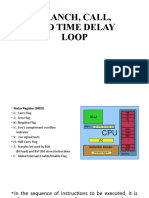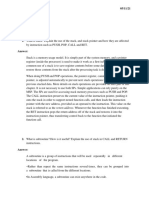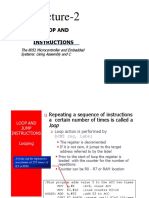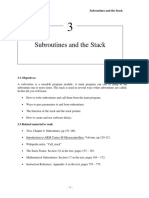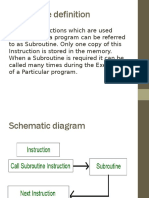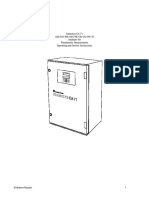0% found this document useful (0 votes)
25 views38 pagesStacks & Subroutines
The document explains the stack and subroutines in a microprocessor, detailing how the stack operates as a LIFO data structure for temporary storage, particularly for addresses and data during subroutine calls. It outlines methods for adding data to the stack, execution of CALL and RET instructions, and the advantages of using subroutines for modular programming and efficiency. Additionally, it provides examples of writing subroutines and the types of call and return instructions available.
Uploaded by
jayashree267geoCopyright
© © All Rights Reserved
We take content rights seriously. If you suspect this is your content, claim it here.
Available Formats
Download as PPTX, PDF, TXT or read online on Scribd
0% found this document useful (0 votes)
25 views38 pagesStacks & Subroutines
The document explains the stack and subroutines in a microprocessor, detailing how the stack operates as a LIFO data structure for temporary storage, particularly for addresses and data during subroutine calls. It outlines methods for adding data to the stack, execution of CALL and RET instructions, and the advantages of using subroutines for modular programming and efficiency. Additionally, it provides examples of writing subroutines and the types of call and return instructions available.
Uploaded by
jayashree267geoCopyright
© © All Rights Reserved
We take content rights seriously. If you suspect this is your content, claim it here.
Available Formats
Download as PPTX, PDF, TXT or read online on Scribd
/ 38












